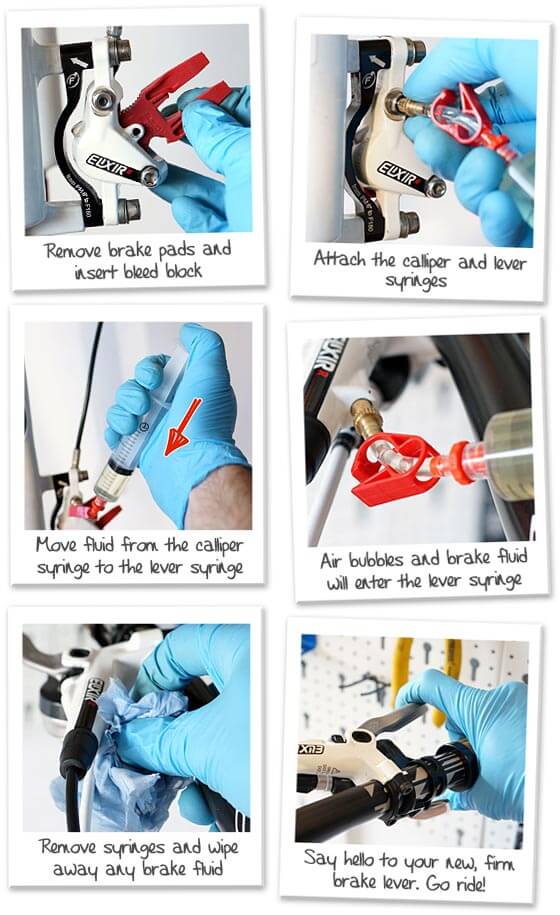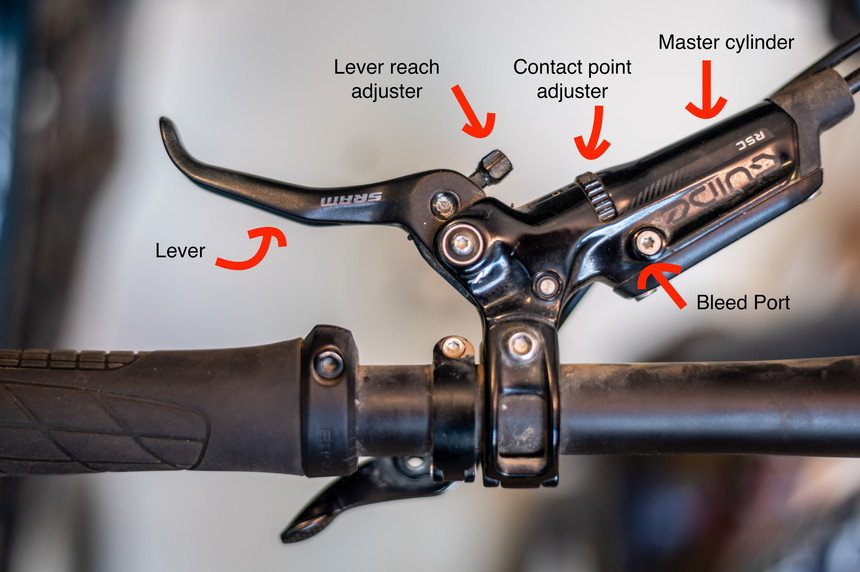How to Bleed Hydraulic Brakes
To bleed hydraulic brakes, start with the furthest brake caliper and work towards the master cylinder. Use a brake bleeding kit for optimal results.
Ensuring that your hydraulic brakes are properly bled is crucial for maintaining braking performance and safety while driving. Air bubbles in the brake lines can compromise the system’s responsiveness and effectiveness, leading to potential brake failure. By following the proper procedure to bleed hydraulic brakes, you can remove air and ensure that your brakes operate smoothly and efficiently.
In this guide, we will walk you through the steps to bleed hydraulic brakes effectively, allowing you to maintain optimal braking performance and enhance overall driving safety.

Credit: epicbleedsolutions.com
Step-by-step Guide To Bleed Hydraulic Brakes
Introductory paragraph:If you want to ensure your vehicle’s braking system is in top condition, knowing how to bleed hydraulic brakes is crucial. As air bubbles can compromise the performance of your brakes, bleeding the brakes is a vital maintenance task that any car owner should be familiar with. In this step-by-step guide, we’ll walk you through the process of bleeding hydraulic brakes, ensuring that you can maintain the safety and efficiency of your brake system.
Preparing The Brake System
Before beginning the bleeding process, gather all the necessary tools and materials, such as brake fluid, a clear plastic hose, a wrench, and a container to collect the old brake fluid. Ensure that the vehicle is on a level surface, and the brake fluid reservoir is filled to the proper level. Loosen the brake fluid reservoir cap to allow any pressure or vacuum to release.
Starting The Bleeding Process
Identify the bleeder valve on the brake caliper or wheel cylinder and attach the clear plastic hose to it. Place the other end of the hose into the collection container. Then, ask a friend to depress the brake pedal gradually and hold it down, allowing you to open the bleeder valve with a wrench. This will release the old brake fluid and any trapped air bubbles from the system.
Bleeding The Brakes
As you open the bleeder valve, watch for the brake fluid to flow through the clear plastic hose. Close the valve once the fluid stops flowing, then ask your friend to release the brake pedal. Repeat this process several times, ensuring that you close the valve before the brake pedal is released each time.
Checking For Air Bubbles
Monitor the brake fluid in the reservoir, ensuring that it stays at the correct level. Keep an eye out for any air bubbles that may appear in the clear hose – a sign that air is still present in the system. Continue bleeding the brakes until no air bubbles are visible and fresh fluid is flowing through the hose.
Finishing The Bleeding Process
Once you are confident that all air bubbles have been removed, tighten the bleeder valve securely. Remove the plastic hose and ensure that the reservoir is filled with fresh brake fluid to the recommended level. Finally, replace the reservoir cap and dispose of the old brake fluid responsibly.

Credit: www.tetongravity.com
Tips And Troubleshooting
Learn how to properly bleed hydraulic brakes with our expert tips and troubleshooting guide. Ensure optimal brake performance with step-by-step instructions for a smooth and safe ride. Master the process with clear explanations and take control of your brake maintenance today.
Using The Right Brake Fluid
Choose the recommended brake fluid type according to your vehicle’s manufacturer.
Double-check the fluid compatibility with the specific brake system to prevent damage.
Avoiding Cross-contamination
Always clean the area around the brake fluid reservoir before opening it.
Use a dedicated clean container for the brake fluid and avoid mixing different types.
Addressing Common Issues
- Check for leaks and tighten any loose connections if you notice a loss of brake fluid.
- Bleed the brake system again if you still feel spongy or soft brake pedal after the first attempt.
Testing The Brakes
- Perform a test drive in a safe area to ensure the brakes are functioning correctly.
- Test the brake pedal for firmness and responsiveness to confirm successful bleeding.

Credit: www.youtube.com
Frequently Asked Questions Of How To Bleed Hydraulic Brakes
How Do You Bleed Air Out Of A Hydraulic Braking System?
To bleed air from a hydraulic braking system, start with the brake fluid reservoir. Attach a clear tube to the brake bleeder valve and submerge the other end in a container of brake fluid. Then, have a helper press the brake pedal while you open and close the bleeder valve to release the air.
How Do You Bleed Hydraulic Brakes By Yourself?
To bleed hydraulic brakes by yourself, start by removing the old brake fluid, attaching a clear tube to the bleeder screw, and placing the other end in a container. Then, slowly pump the brake lever to push out any air bubbles.
Repeat the process until the fluid is clear and free of bubbles. Tighten the bleeder screw and test the brakes to ensure they’re working properly.
What Are The Two Methods Of Bleeding Hydraulic Brakes?
The two methods for bleeding hydraulic brakes are the manual method and the vacuum method. In the manual method, you use a brake bleeder tool to manually pump and release the brake fluid. In the vacuum method, you use a vacuum pump to suck out the air from the brake system.
How Do I Know If My Hydraulic Brakes Need Bleeding?
Check for a spongy brake lever feel or decreased braking power. Look for air bubbles in the brake fluid. If you notice these signs, your hydraulic brakes likely need bleeding. It’s crucial to maintain proper brake function for safety.
What Are Hydraulic Brakes And How Do They Work?
Hydraulic brakes use fluid to transfer force from the brake pedal to the brake pads, creating friction and slowing down or stopping the vehicle.
Why Is It Important To Bleed Hydraulic Brakes?
Bleeding hydraulic brakes removes air bubbles from the brake lines, ensuring proper brake function and preventing spongy or reduced braking power.
How Often Should Hydraulic Brakes Be Bled?
Hydraulic brakes should be bled whenever the brake system is opened for maintenance or repairs, or if the brakes feel spongy or have reduced performance.
Conclusion
To sum up, bleeding hydraulic brakes is essential for maintaining optimal brake performance. By following the steps outlined in this guide, you can ensure your brakes work effectively and keep you safe on the road. Regular maintenance of your hydraulic brake system is crucial for the longevity of your vehicle and your own safety.
Keep your brakes in top condition by bleeding them regularly.

